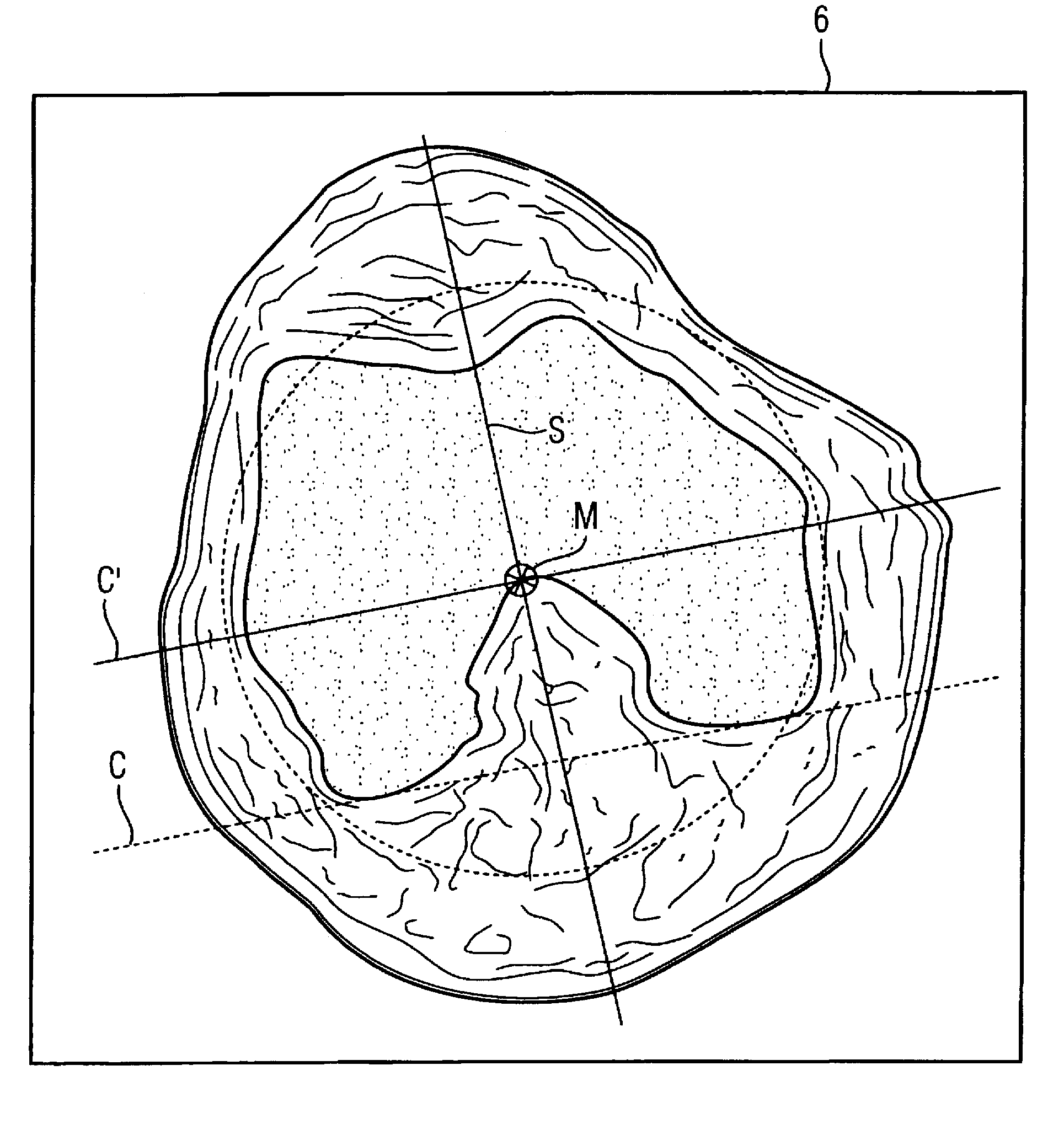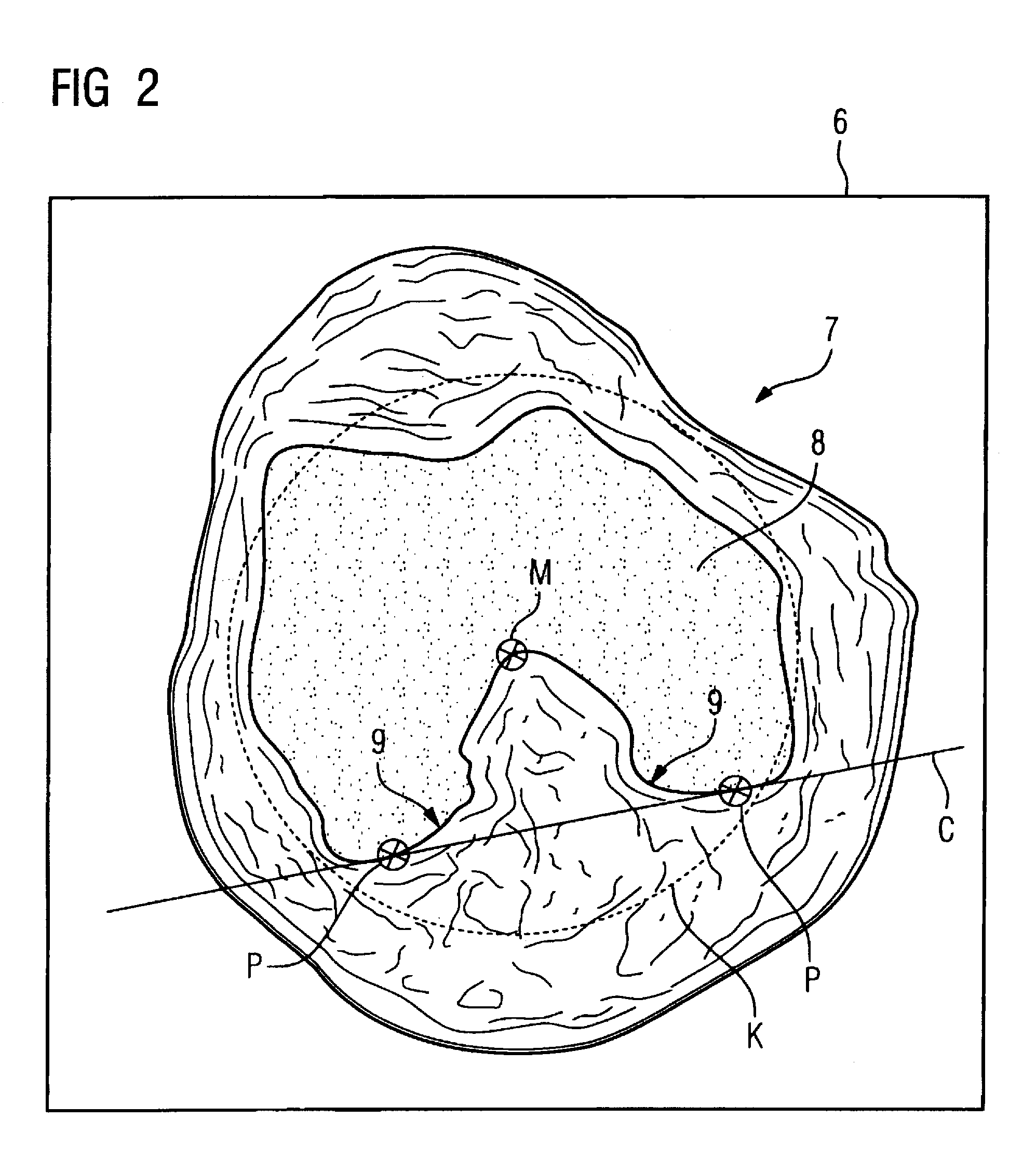Mr method and apparatus for determining coronal and sagittal image planes from an image data set of a knee joint
a technology of image data and knee joint, applied in image analysis, instruments, computing, etc., can solve problems such as difficulty, pain in the knee joint region, and impair the patient's freedom of movement,
- Summary
- Abstract
- Description
- Claims
- Application Information
AI Technical Summary
Benefits of technology
Problems solved by technology
Method used
Image
Examples
Embodiment Construction
[0019]FIG. 1 shows an inventive magnetic resonance system 1 that has an MR scanner 2 connected to a control device 3 (controlling the operation) with an associated image processing device 4 that includes a suitably fashioned or programmed calculation device. The control device 3 controls the entire operation flow, including the image acquisition; the image processing ensues in the image processing device 4, with which a monitor 5 is connected for image display.
[0020]For a knee joint examination, three localizer exposures, (overview images), are initially acquired as is typical in three defined orthogonal orientations of the knee joint region, the localizer exposures serving for the generation of a rough overview image. A transversal plane that proceeds through the knee joint is now automatically determined using these localizer exposures. A first transversal slice image family is now automatically acquired based on this automatically-determined alignment of the transversal plane. Th...
PUM
 Login to View More
Login to View More Abstract
Description
Claims
Application Information
 Login to View More
Login to View More - R&D
- Intellectual Property
- Life Sciences
- Materials
- Tech Scout
- Unparalleled Data Quality
- Higher Quality Content
- 60% Fewer Hallucinations
Browse by: Latest US Patents, China's latest patents, Technical Efficacy Thesaurus, Application Domain, Technology Topic, Popular Technical Reports.
© 2025 PatSnap. All rights reserved.Legal|Privacy policy|Modern Slavery Act Transparency Statement|Sitemap|About US| Contact US: help@patsnap.com



